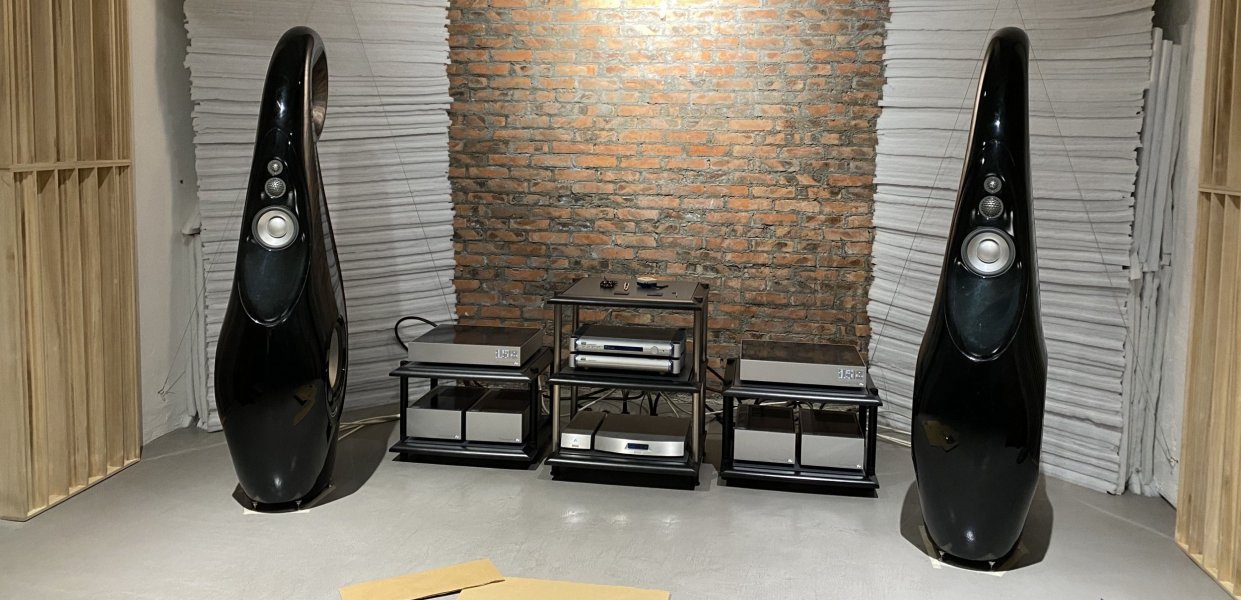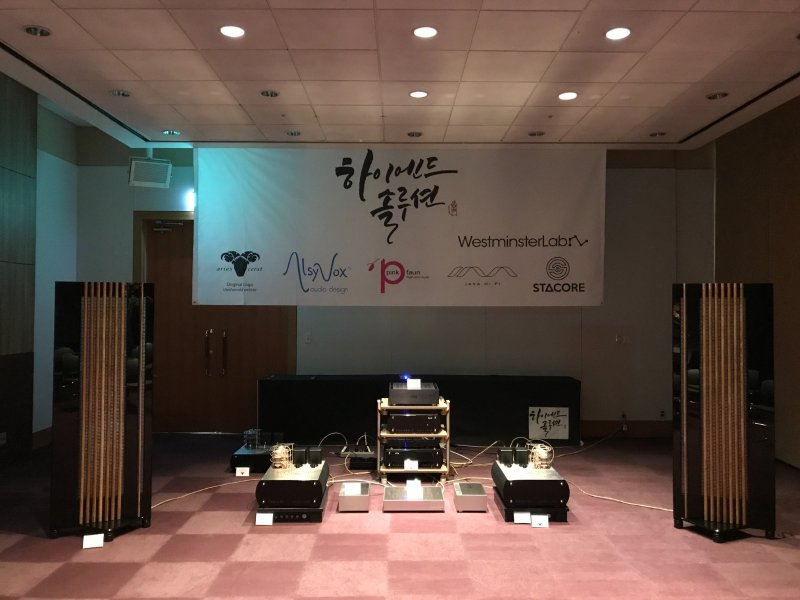Questions posed by the Members above are commonly raised questions from our customers and distributors.
We really wish we are the first ones to have cracked it! But we are not the first one using the idea of dynamic bias on the market, i.e. in the past, Krell was using a similar kind of technology for some of their products.
The heat dissipation of an amplifier depends on a lot of factors while many people usually consider only the BIAS ( class A, AB ). Some manufacturers decided to tune the bias much higher than required to classify an amplifier as Class A ( I guess mostly for sound tuning purposes ). Surely higher bias results in more drained current, energy losses, and heat.
But one important factor always being missed is the rail voltage. The higher the voltage the more heat is dissipated as the bias is draining. Because of the higher efficiency (impedance ) of modern speakers, we have designed the Rei to have a lower rail voltage compared to many amps on the market. A lower rail voltage will result in much less heat when the bias current continuously drains. For users who need more voltage ( bigger room or listening at very high volume ), we designed the Rei to be able to run in bridge mode to address those demands. Of course, a single pair of Rei will power a majority of today's top-class loudspeakers under normal operating conditions. That said, I enjoy the extra power of the Rei's in bridged mode when powering my Giya G1.
Then we may also think about the number of output transistors. Let’s say if two amps tuning both bias as 1A, holding all other factors constant. 10 transistors in total will be hotter than 5 transistors ( more or less twice at hot ). You may think the output power delivery of the 10 transistors amp will be higher, this is not necessarily true as different transistors have different current delivery patterns. We have chosen a transistor with a higher (compared to more typical ones) current delivery. By limiting the number of output transistors, and combining with the advantages we have with lower rail voltage as stated, together with the utilization of dynamic bias, the final result is much less heat dissipation than usual for Class A amplifiers.
The rated output is also one of the key points too. Using your example, Accupahse A75 designed the output at 60watt so as to double down to 1 ohm at 480 Watt. A choice we made very early in the design stage was to consider the majority of modern loudspeakers rarely dip down to 1ohm, and for the ones who do ( i.e. ribbon ), the impedance does not fluctuate that much. We do not need the Rei to double down to 1ohm, which allows us considerably more room to tune for higher power at 8,4,2 ohms.
The power supply is actually quite big in the Rei, as it only supplies to one channel of the Amp. Also for the performance of a heatsink, it depends on a lot of things. i.e. the airflow dynamic, material, material density, profile design, surface finishing, etc. It is not that a bigger and heavier heatsink must do better than a smaller lighter heatsink. For us, it's all about optimisation and choosing the right approach to all aspects of the design in concert with our design priorities.
Addressing the question concerning weight, if you want, there are lots of ways to increase the weight of an amplifier such as encasing the transformer, using steel rather than aluminum alloy, etc. Let’s say just by swapping out the top and the bottom cover of the Rei from Carbon to Aluminum and changing the main chassis to steel, the unit will be 5kgs heavier. But we have to do it this way for good reason.
We don’t know if the Rei will overturn some common concepts and ideas about Class A amplifiers, and, of course, we cannot make it overcome the laws of physics. That said, we just don’t want to make a usual or expected product - we want to advance the state of the art and at the same time produce, beautiful, simple products that will stand the test of time.
Rei is a real Class A amplifier
Sincerely, Angus
We really wish we are the first ones to have cracked it! But we are not the first one using the idea of dynamic bias on the market, i.e. in the past, Krell was using a similar kind of technology for some of their products.
The heat dissipation of an amplifier depends on a lot of factors while many people usually consider only the BIAS ( class A, AB ). Some manufacturers decided to tune the bias much higher than required to classify an amplifier as Class A ( I guess mostly for sound tuning purposes ). Surely higher bias results in more drained current, energy losses, and heat.
But one important factor always being missed is the rail voltage. The higher the voltage the more heat is dissipated as the bias is draining. Because of the higher efficiency (impedance ) of modern speakers, we have designed the Rei to have a lower rail voltage compared to many amps on the market. A lower rail voltage will result in much less heat when the bias current continuously drains. For users who need more voltage ( bigger room or listening at very high volume ), we designed the Rei to be able to run in bridge mode to address those demands. Of course, a single pair of Rei will power a majority of today's top-class loudspeakers under normal operating conditions. That said, I enjoy the extra power of the Rei's in bridged mode when powering my Giya G1.
Then we may also think about the number of output transistors. Let’s say if two amps tuning both bias as 1A, holding all other factors constant. 10 transistors in total will be hotter than 5 transistors ( more or less twice at hot ). You may think the output power delivery of the 10 transistors amp will be higher, this is not necessarily true as different transistors have different current delivery patterns. We have chosen a transistor with a higher (compared to more typical ones) current delivery. By limiting the number of output transistors, and combining with the advantages we have with lower rail voltage as stated, together with the utilization of dynamic bias, the final result is much less heat dissipation than usual for Class A amplifiers.
The rated output is also one of the key points too. Using your example, Accupahse A75 designed the output at 60watt so as to double down to 1 ohm at 480 Watt. A choice we made very early in the design stage was to consider the majority of modern loudspeakers rarely dip down to 1ohm, and for the ones who do ( i.e. ribbon ), the impedance does not fluctuate that much. We do not need the Rei to double down to 1ohm, which allows us considerably more room to tune for higher power at 8,4,2 ohms.
The power supply is actually quite big in the Rei, as it only supplies to one channel of the Amp. Also for the performance of a heatsink, it depends on a lot of things. i.e. the airflow dynamic, material, material density, profile design, surface finishing, etc. It is not that a bigger and heavier heatsink must do better than a smaller lighter heatsink. For us, it's all about optimisation and choosing the right approach to all aspects of the design in concert with our design priorities.
Addressing the question concerning weight, if you want, there are lots of ways to increase the weight of an amplifier such as encasing the transformer, using steel rather than aluminum alloy, etc. Let’s say just by swapping out the top and the bottom cover of the Rei from Carbon to Aluminum and changing the main chassis to steel, the unit will be 5kgs heavier. But we have to do it this way for good reason.
We don’t know if the Rei will overturn some common concepts and ideas about Class A amplifiers, and, of course, we cannot make it overcome the laws of physics. That said, we just don’t want to make a usual or expected product - we want to advance the state of the art and at the same time produce, beautiful, simple products that will stand the test of time.
Rei is a real Class A amplifier
Sincerely, Angus








